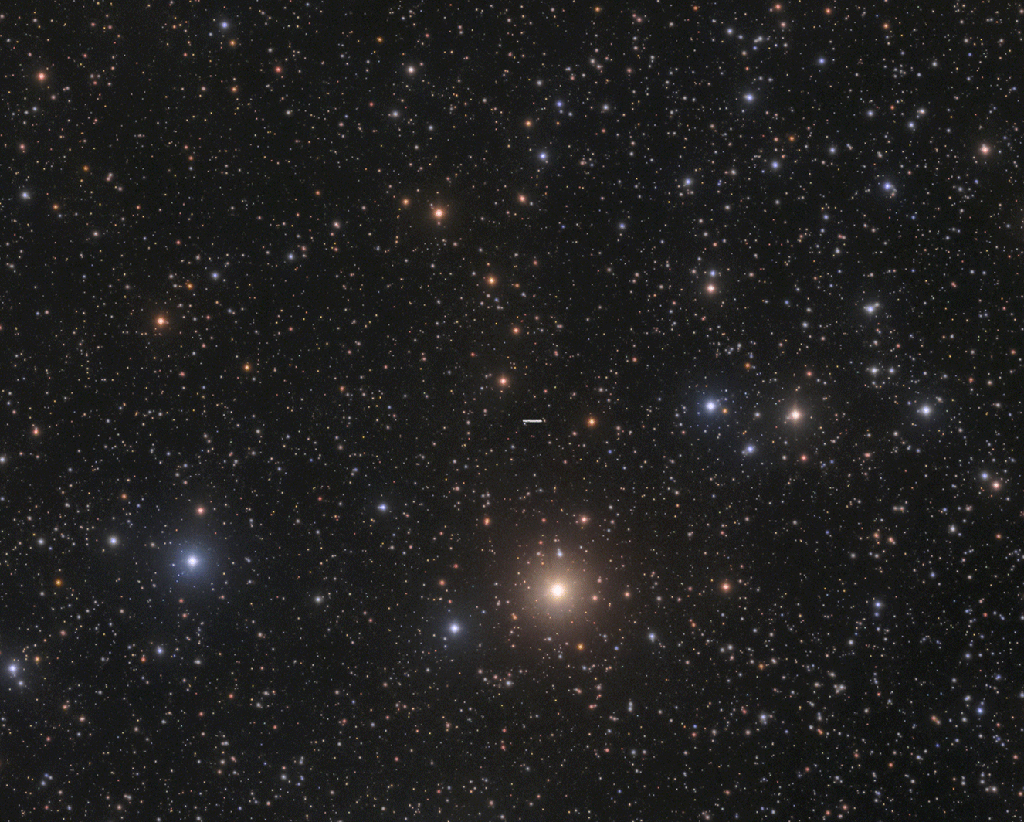2021年12月31日
JWST on the Road to L2
Image Credit & Copyright: Malcolm Park (North York Astronomical Association)
Explanation: This timelapse gif tracks the James Webb Space Telescope as it streaks across the stars of Orion on its journey to a destination beyond the Moon. Recorded on December 28, 12 consecutive exposures each 10 minutes long were aligned and combined with a subsequent color image of the background stars to create the animation. About 2.5 days after its December 25 launch, JWST cruised past the altitude of the Moon’s orbit as it climbed up the gravity ridge from Earth to reach a halo orbit around L2, an Earth-Sun Lagrange point. Lagrange points are convenient locations in space where the combined gravitational attraction of one massive body (Earth) orbiting another massive body (Sun) is in balance with the centripetal force needed to move along with them. So much smaller masses, like spacecraft, will tend to stay there. One of 5 Lagrange points, L2 is about 1.5 million kilometers from Earth directly along the Earth-Sun line. JWST will arrive at L2 on January 23, 29 days after launch. While relaxing in Earth’s surface gravity you can follow the James Webb Space Telescope’s progress and complicated deployment online.
Tomorrow’s picture: 2021 in Moonstripes
前往L2点途中的詹姆斯·韦伯太空望远镜
影像提供与版权: Malcolm Park (North York Astronomical Association)
说明: 这则延时gif动画,呈现詹姆斯·韦伯太空望远镜在前往月亮后方的目的地之旅程中,掠过猎户座恒星前方的景象。在12月28日那天拍摄的12张照片(曝光时间皆为10分钟),经过对齐后再与后续拍摄的彩色星野叠合,从而组合出这则动画。取像的时间点大约在詹姆斯·韦伯太空望远镜于12月25日发射的2天半之后,它在攀爬地球的重力井中,刚通过月轨高度和地球的重力棱脊,往位在地球-太阳系统L2拉格朗日点的晕轨道飞奔。拉格朗日点是在太空中的一些特定点,位在这些定点的物体,受到其中的大质量天体之一(地球)和另一个大质量天体(太阳)的集体重力吸引,所产生的向心力恰好能让它与这二个天体同步运动。而像太空船这种相对质量极小的物体,通常会停留在这些定点上。位在地球-太阳连线上、离地球约1百50万公里的L2点,就是5个拉格朗日点之1。詹姆斯·韦伯太空望远镜预定在发射29天之后的1月23日抵达L2点。在地球表面重力里悠闲过活的你,可在线上关注詹姆斯·韦伯太空望远镜复杂布署操控的进程。
明日的图片: 2021 in Moonstripes







